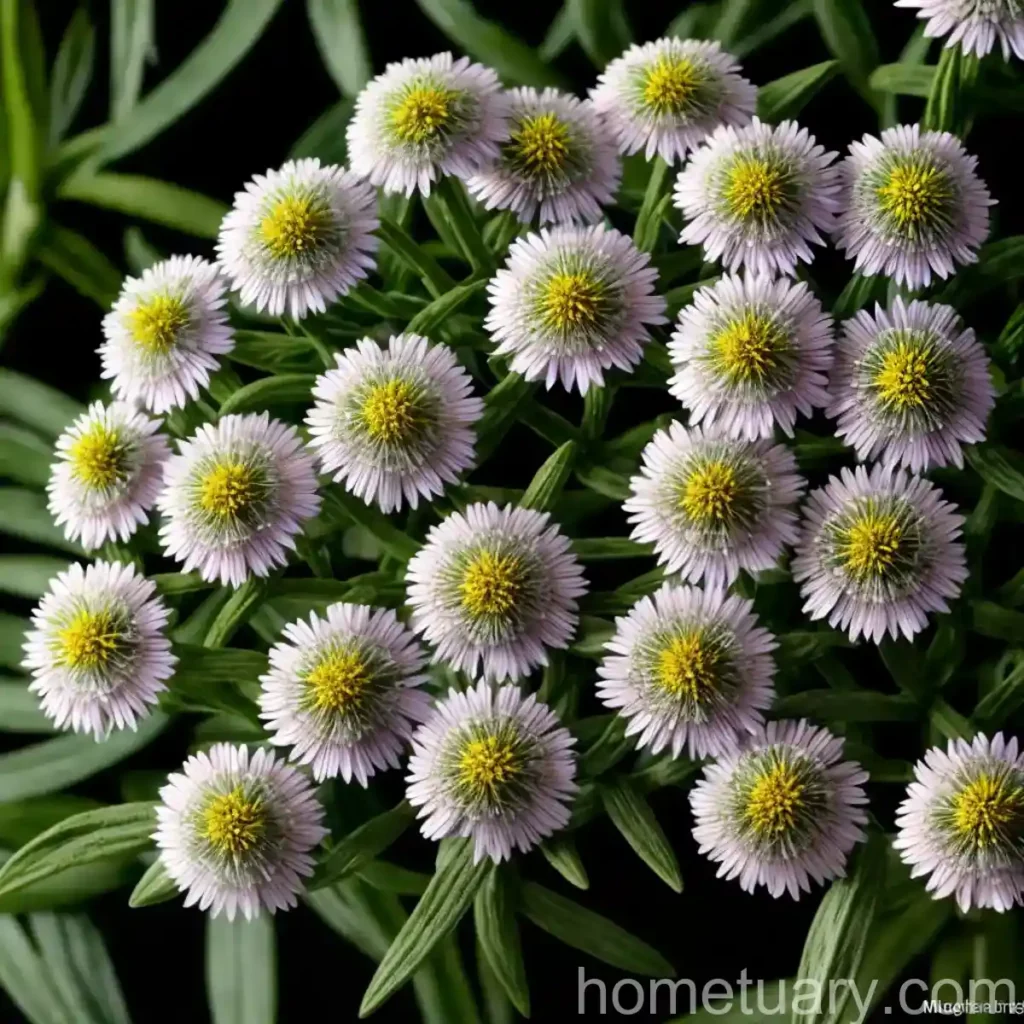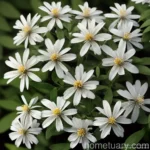Large-Leaved Aster (Eurybia macrophylla): A Comprehensive Guide to Care and Cultivation
Plants are an essential part of our environment, providing oxygen, food, and beauty to our world. In this comprehensive guide, we will delve into the world of the large-leaved aster (Eurybia macrophylla). From its cultural significance to its uses, growing conditions, maintenance, and propagation, we will cover every aspect of this fascinating plant.
What is Large-Leaved Aster (Eurybia macrophylla)?
Large-leaved aster, scientifically known as Eurybia macrophylla, is a herbaceous perennial plant that belongs to the Asteraceae family. It is native to North America and is renowned for its stunning display of daisy-like flowers and attractive foliage. The plant typically grows in clusters and thrives in woodland settings, making it a popular choice for naturalized gardens and perennial borders.
Eurybia macrophylla is characterized by its large, heart-shaped, and toothed leaves, which give the plant its common name. The aster’s flowers bloom in late summer to early fall, adding a burst of color to the landscape when many other plants have finished flowering.
Key Takeaways – Large-Leaved Aster (Eurybia macrophylla)
Before we delve into the specifics of caring for large-leaved aster, let’s review some key takeaways:
- Plant Name: Large-Leaved Aster (Eurybia macrophylla)
- Family: Asteraceae
- Native Habitat: North America
- Growth Habit: Herbaceous perennial
- Flowering Season: Late summer to early fall
- Foliage: Large, heart-shaped leaves
- Cultural Significance: Popular in naturalized gardens and woodland settings
Now that we have an overview of what large-leaved aster entails, let’s explore the various aspects of caring for and cultivating this beautiful plant.
Culture
Uses
Large-leaved aster (Eurybia macrophylla) holds both ornamental and ecological value, making it a versatile addition to gardens and landscapes. Some of its primary uses include:
- Ornamental Beauty: The plant’s attractive foliage and vibrant flowers make it a visually appealing choice for gardens and naturalized landscapes.
- Wildlife Habitat: The nectar-rich flowers of large-leaved aster attract pollinators such as bees and butterflies, contributing to the ecological balance of the garden.
- Naturalized Gardens: Its ability to thrive in woodland settings and naturalized gardens makes it a valuable addition to ecological landscaping.
Care and Cultivation
Caring for large-leaved aster involves tending to its water, sunlight, soil, and nutritional needs. Let’s explore each of these aspects in detail.
Water
Large-leaved aster (Eurybia macrophylla) thrives in consistently moist soil, making it well-suited to woodland and garden settings with ample access to water. However, it is essential to ensure that the plant does not experience waterlogging, as this can lead to root rot and other issues. During periods of drought, supplemental watering can help maintain the plant’s vigor and promote robust flowering.
Sunlight
In its natural habitat, large-leaved aster thrives in partial shade to dappled sunlight. When cultivated in gardens, it is important to provide the plant with similar light conditions, especially to prevent leaf scorch during hot summer months. Selecting a site with partial shade and well-drained soil can create an ideal environment for the plant to flourish.
Fertilizer
Applying a balanced, organic fertilizer in spring can provide the nutrients necessary for healthy growth and abundant flowering. A slow-release, all-purpose fertilizer can be incorporated into the soil around the base of the plant, following the manufacturer’s recommendations for application rates. Additionally, amending the soil with organic matter such as compost can further enhance the plant’s nutritional intake.
Soil
Large-leaved aster (Eurybia macrophylla) thrives in humus-rich, well-draining soil. Amending the planting area with organic matter such as compost can improve soil structure and fertility, providing an optimal growing medium for the plant. The addition of organic mulch can help retain soil moisture and suppress weed growth, contributing to the overall health of the plant.
Pruning
Pruning plays a crucial role in shaping the growth and promoting the longevity of large-leaved aster. Here are some essential pruning tips for this plant:
- Deadheading: Removing spent flowers can encourage the production of new blooms and prevent self-seeding, keeping the plant tidy and promoting continuous flowering.
- Division: As the plant matures, dividing the clumps every few years can rejuvenate the aster, preventing overcrowding and maintaining its vigor.
- Cutting Back: In late fall or early spring, cutting back the stems to ground level can help rejuvenate the plant and stimulate fresh growth for the upcoming season.
Propagation
Large-leaved aster can be propagated through several methods, including division and seed propagation.
- Division: Dividing mature clumps in early spring can yield new, vigorous plants. Carefully separating the root mass and replanting the divisions in suitable locations can establish new growth.
- Seed Propagation: Collecting and sowing seeds in a controlled environment can also yield new plants. By providing the seeds with ideal germination conditions, such as consistent moisture and moderate temperatures, successful propagation can be achieved.
Container Popularity
While large-leaved aster is often associated with naturalized gardens and perennial borders, it also has a place in container gardening. The plant’s ability to thrive in partially shaded areas, combined with its attractive foliage and flowers, makes it a compelling choice for container arrangements in shaded patios, balconies, and urban gardens.
Container Common Diseases
When grown in containers, large-leaved aster may be susceptible to certain diseases, including:
- Powdery Mildew: In humid conditions, the plant’s foliage may be affected by powdery mildew, resulting in a white, powdery coating on the leaves.
- Cercospora Leaf Spot: This fungal disease can cause circular, dark spots on the plant’s foliage, potentially leading to leaf drop and reduced vigor.
Disease Diagnosis
To effectively diagnose and manage diseases affecting large-leaved aster, it is essential to monitor the plant for any signs of decline. Early detection of symptoms such as discolored or distorted foliage, powdery coatings, or unusual spots can prompt timely intervention to prevent the spread of diseases and preserve the plant’s health.
Common Pests
Large-leaved aster may encounter pests such as aphids, spider mites, and slugs. Regular monitoring of the plant can aid in early pest detection, allowing for targeted intervention through natural or low-impact pest control methods.
Botanist’s Tips
To ensure the successful growth and maintenance of large-leaved aster, consider the following tips from a botanist’s perspective:
- Planting Depth: When planting large-leaved aster, ensure that the crown sits at soil level to prevent moisture-related issues and promote healthy growth.
- Mulching: Applying a layer of organic mulch around the base of the plant can regulate soil temperature, retain moisture, and deter weed growth, contributing to the plant’s overall well-being.
Fun Facts
Here are some interesting tidbits about large-leaved aster to further pique your interest:
- Native Habitat: Large-leaved aster is indigenous to North American woodlands and thrives in the unique ecological conditions of its native habitat.
- Ecological Role: The plant serves as a valuable resource for pollinators and contributes to the biodiversity of woodland ecosystems.
- Cultural Significance: Large-leaved aster has been celebrated in horticultural and ecological circles for its adaptability and ornamental appeal.
External Resources
For more in-depth information on large-leaved aster, explore the following external resources:
Conclusion
From its cultural significance to its role in ecological landscapes, large-leaved aster (Eurybia macrophylla) stands as a captivating and valuable plant species. By understanding and implementing the care and cultivation practices outlined in this comprehensive guide, you can nurture and appreciate the beauty of this herbaceous perennial in your own garden or landscape. Embrace the versatility and charm of large-leaved aster, and discover the joy of cultivating this remarkable plant.
In the natural world, the large-leaved aster’s vibrant blooms and ecological contributions paint a picture of resilience and natural elegance. As you embark on your journey of caring for this plant, may you find inspiration in its beauty and significance, enriching both your garden and the world around you.
Remember, every leaf and petal of the large-leaved aster tells a story—a story of resilience, beauty, and the timeless dance of nature.
Keywords: Eurybia macrophylla plant, Large-leaved aster care, Eurybia macrophylla cultivation, Growing large-leaved aster, Eurybia macrophylla characteristics, Large-leaved aster flowering, Eurybia macrophylla benefits, Large-leaved aster varieties, Eurybia macrophylla garden, Large-leaved aster pruning, Eurybia macrophylla foliage, Large-leaved aster planting tips, Eurybia macrophylla landscape use, Large-leaved aster soil requirements, Eurybia macrophylla water needs, Large-leaved aster sunlight preferences, Eurybia macrophylla disease resistance, Large-leaved aster pests control, Eurybia macrophylla propagation methods, Large-leaved aster blooming period, Eurybia macrophylla companion plants, Large-leaved aster wildlife attraction, Eurybia macrophylla autumn display, Large-leaved aster division technique, Eurybia macrophylla hardiness zones, Large-leaved aster native habitat, Eurybia macrophylla medicinal properties, Large-leaved aster herbal uses, Eurybia macrophylla landscape design, Large-leaved aster container gardening, Eurybia macrophylla seasonal care, Large-leaved aster foliage color, Eurybia macrophylla garden arrangement, Large-leaved aster naturalized gardens, Eurybia macrophylla pollinator-friendly, Large-leaved aster early spring bloomers, Eurybia macrophylla water-wise plants, Large-leaved aster drought tolerance, Eurybia macrophylla shade-loving plants, Large-leaved aster low-maintenance gardening, Eurybia macrophylla cutting garden, Large-leaved aster woodland garden plants, Eurybia macrophylla perennial borders, Large-leaved aster landscape centerpiece, Eurybia macrophylla showy flowers, Large-leaved aster vibrant foliage, Eurybia macrophylla garden design ideas, Large-leaved aster seasonal interest, Eurybia macrophylla attractive cultivars, Large-leaved aster plant family















